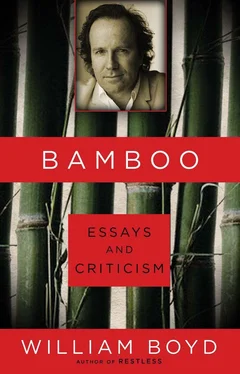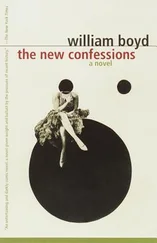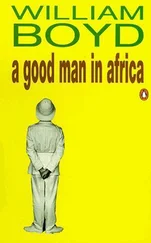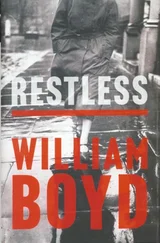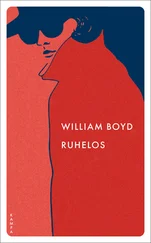I use the word “greatness,” but I use it advisedly. Much as I like and admire Franz Kline’s work, I would never use the word “masterpiece” about any of his paintings. Indeed I would never use the word about any purely abstract painting. This is what baffles and frustrates me about abstract painting in general, and not just the Abstract Expressionists of the New York School. When I consider the abstract paintings that I possess (by William Scott, Keith Vaughan, Sandra Blow and John Hoyland) and consider the pleasure I derive from them, it is of exactly the same order as my response to Franz Kline’s best work. Yet for all the pleasure taken, there is something lacking, something fundamentally indifferent. Pure abstraction, in denying the human context, denies itself true greatness.
Two factors lead me towards this conclusion, and the presence of both of them is essential if a painting is to be deemed “great” or the artist acclaimed as a “master.” In 1928 Paul Valéry reviewed a book on Veronese’s frescoes, during which he bemoaned the quality and calibre of the art of his time (this in 1928! One wonders how he would have felt today). He further commented that it was taken for granted in Veronese’s time that there would be in any artist
a combination of ability and technique, that is currently extremely rare: it was assumed that any artist was in full command of the science of his art to a degree that it was second nature. The utmost virtuosity [in the practising of his art] was absolutely indispensable.
This is a working definition of an artist — an artist of stature — that seems to me to be timelessly valid. Would we rather require that an artist have only a partial knowledge of the science of his art and be fair to middling in the practice of it? Franz Kline could draw passably well, certainly considerably better than Jackson Pollock, or Mark Rothko, which is a plus, but the “utmost virtuosity” was probably far beyond his reach. It may be argued that by the different standards of Abstract Expressionism Kline was indeed in full command of the science of his art, but there is still the second factor to be considered before we crown him with laurels.
I want to borrow and somewhat adapt a theory put forward by Richard Wollheim in the conclusion to his wise and remarkable book Painting as an Art . There, he offers an evolutionary argument for the objective intelligibility of painting. He argues that painting is intelligible — that painting conveys meaning — simply and precisely because it has survived over the centuries as an art in human societies. If it did not “work,” in other words, it would not have survived in these societies—“societies in which a common human nature manifests itself.” In my opinion, an art of pure abstraction reduces our ability to see our common human nature in the work of art. (Wollheim would not agree with me: he considers, for example, some late, purely abstract de Koonings as masterpieces. We part company here.) I am not saying that our common human nature is absent or degraded, I am merely saying it is much reduced and severely simplified and, in so far as this is the case, purely abstract art cannot function as art of the highest level and greatest profundity. I feel this when I confront the work of Franz Kline, and it prompts me to ask the old question: why swim in a swimming pool when you can swim in the sea?
1994
1906. February.
Paul Klee writes in his diary:
My work in the studio will grow considerably more lively. I have succeeded in directly transposing “nature” into my style. The notion of “study” shall be a thing of the past. Everything shall be Klee, regardless of whether impression and representation are separated by days or moments.
I wonder if a similar revelation was ever experienced by Howard Hodgkin round about 1975; if he suddenly knew, instinctively, as Klee knew sixty-nine years earlier, that henceforth “everything shall be Hodgkin.” Certainly the marvellous exhibition that was in New York and moves to Fort Worth and then Düsseldorf later this year seems to imply that 1975 was the watershed.
I was, serendipitously, reading Klee’s diaries as I was visiting the exhibition and generally thinking about Hodgkin and his work. This happy accident provoked a series of parallel reactions and cross-fertilizations that wouldn’t necessarily have been made otherwise. Klee and Hodgkin are not yoked together in the way that, say, Vuillard-Hodgkin and Bonnard-Hodgkin more commonly are. It proved an interesting way of looking at Hodgkin’s work from a different angle, and in the light of a different exemplar. For simple instance, the idea Klee floats in the extract quoted above of “impression and representation” being separated by days or moments seems a succinct definition of the modus operandi that Hodgkin also avows. The impression — the private event, the memory — is transfigured in paint on wood as representation, although its final “representation” may take years, rather than days or moments, to be finalized. In Hodgkin’s case the original afflatus may be entirely lost on the viewer, or is so enigmatic as to have an identical effect, or may — simply — have been rendered in shapes and colour tones. Klee can often be quite as oblique as Hodgkin and, set beside his, Klee’s titles possess a similar hazy allusiveness — are oddly Hodgkinian — and hint at a hidden meaning rather than describing the painted image. Klee: (examples taken at random) Contemplating, Blossoming, Uplift and Direction (Glider Flight) . Hodgkin: Self-pity, Writing, Talking about Art .
Klee’s remarkable diaries prove salutary and humbling reading in this the day and age of the artist on fast track, the artist as snake-oil salesman, the hype-master with limited or undeveloped formal skills, the one-smart-idea pedlar. We see in these candid and beguiling pages the fascinating record of a great artist’s growth: its almost unbearable deliberation, full of struggle, laborious self-education, moments of despair and doubt, of inspiration provided by other arts — literature and music — and we are reminded of the old definition of “genius” as being the infinite capacity for taking pains. Klee’s sheer diligence, his doggedness, his search for that moment when “everything shall be Klee,” are powerfully reminiscent of Hodgkin’s own slow and steady development, of its learned and scholarly undertones; there is a further parallel in Hodgkin’s comparatively late flowering.
That it has indeed flowered is clearly evidenced in this collection of paintings spanning two decades. Two decades of work, moreover, that display an astonishing homogeneity and occupy a near-perfect plateau of success. The nature and extent of this consistency is quite clearly revealed in two similar paintings: The Hopes at Home and Patrick Caulfield in Italy . The first was painted in 1973–7, the second in 1987–92. In both pictures we see gathered together what we might call Hodgkin’s painterly vocabulary, the key Hodgkinian tropes. Two things strike the viewer immediately: the framing effect, a dark inky green in The Hopes , black in Caulfield , and the glowing lambency of the colours the frames surround. The frame, of course, achieves several ends. It “offers” the painting; it defines its edges; its colour offsets and complements the colours in the framed space. It creates, too, a trompe l’oeil effect of, as it were, setting back the painted area. These visual consequences are commonplace and were doubtless understood by the first artist who painted a border round his picture or set it within a wooden frame. Hodgkin, however, has made it almost his trademark: the painted frame itself and the painted framed surface are integral to the whole effect of the composition and not a decorative afterthought. Almost without exception we view Hodgkin’s pictures through a painted framing device.
Читать дальше
